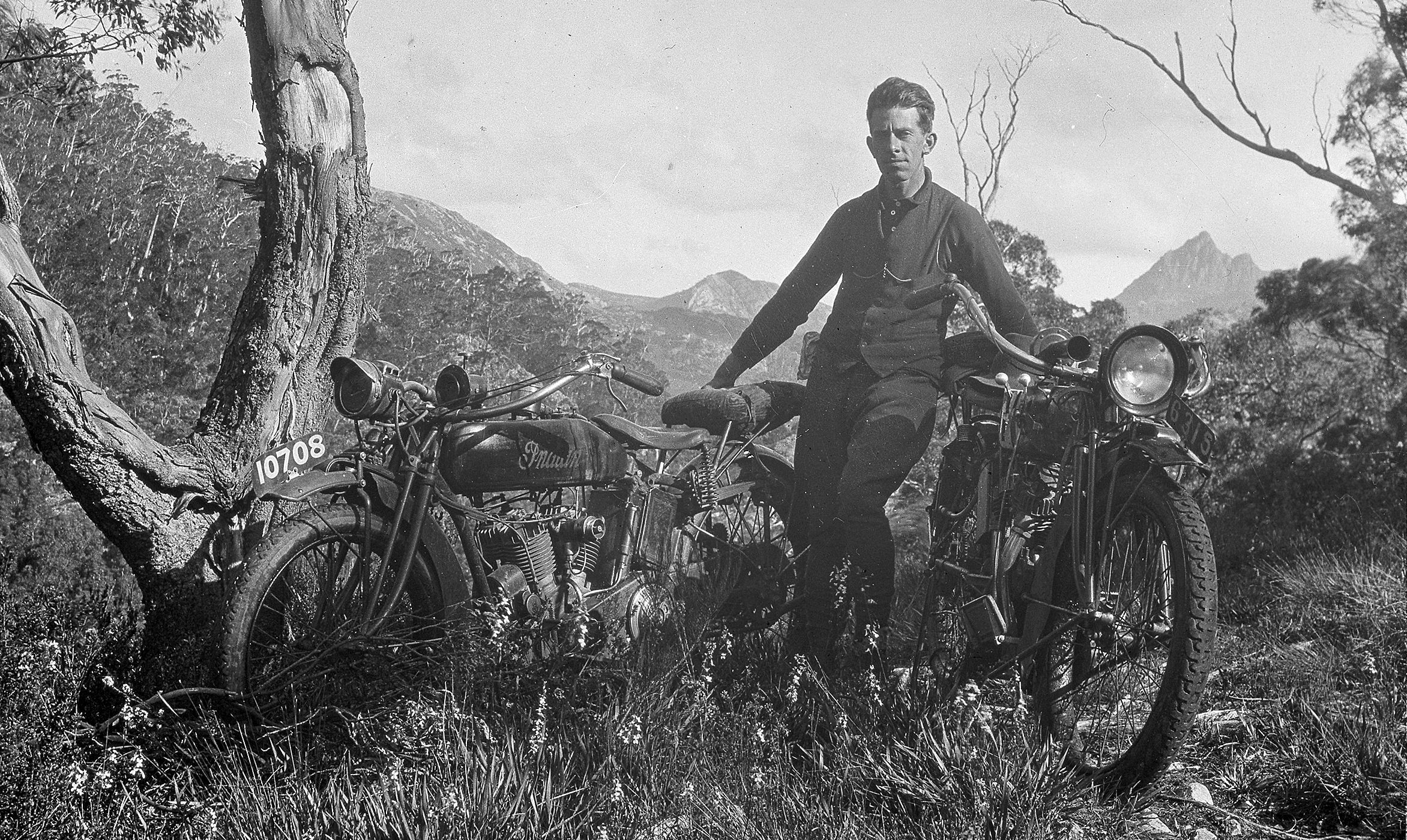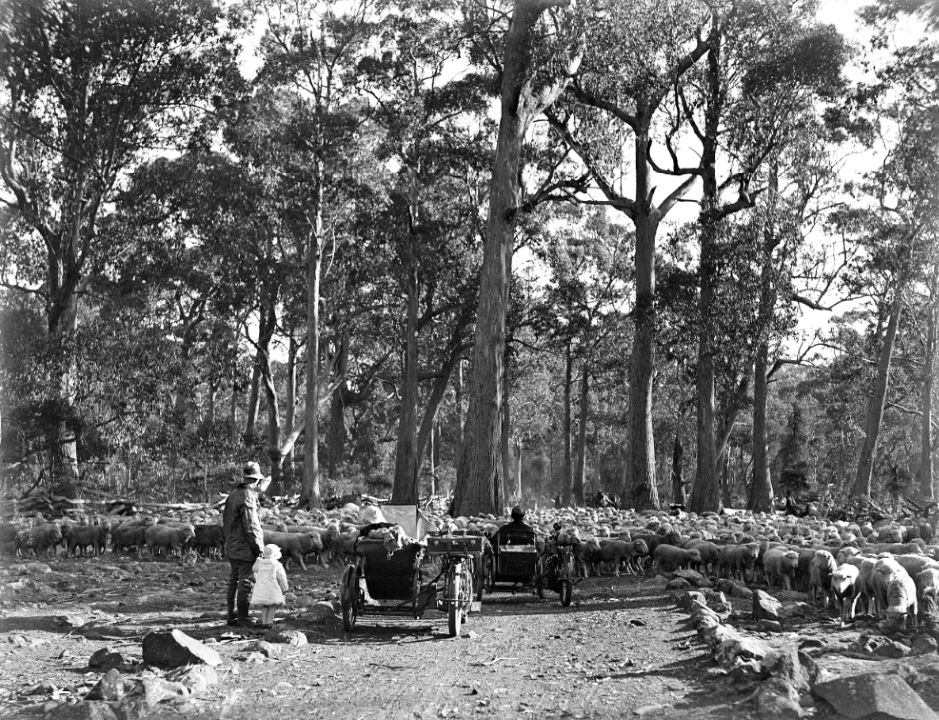Image: Indian Motorcycles: first to cross Ben Lomond to Mathinna, November 1921. HJ King and members of the Tasmanian Motor Cycle Club pushed themselves and their machines to new feats of endurance, in their promotion of motorcycling as a means to explore Tasmania. QVM.1992.P.0065.
This Sunday marks the final day of the popular local history exhibition HJ King: Cameras and Carburettors at the Queen Victoria Museum at Inveresk.
Herbert John ('H.J.') King (1892–1973) ran a bicycle and motorcycle shop with his family in Launceston, and used motorcycles, cars and aircraft to reach many inaccessible parts of Tasmania.
He was an extremely talented amateur photographer, and used his photographs to document his outdoor explorations. He experimented with photographic processes, won prizes for his black and white photographs, and took some of the earliest Australian examples of civilian aerial photography.
While King was not a household name, he is known for his lasting impact on Tasmania and the people around him.

Image: H J King Collection, QVM:2014:P:4214. Stereographic photograph (detail) of HJ King with two Indian Motorcycles on a trip to Cradle Mountain, 1921.
He was very dedicated to his family - his parents and brothers, and of course his wife Lucy and their two daughters. His love of the outdoors meant that he was part of a tight-knit community of explorers, hikers and early conservationists, and argued strongly for the creation of what was to become the Cradle Mountain-Lake St Clair National Park.
In later years he and his wife were stalwarts of the Field Naturalist community, and his collection activities had a national impact.
King loved and embraced technology. Not only did his family sell bicycles and motorcycles, but Herb and his brothers all made use of the opportunities and possibilities that they presented.
He loved speed, taking part in motorcycle races, reliability trials, hill-climbs and long-distance trips.
The other item of technology that King loved was the camera.
He used photography both as an outlet for his creativity and also as a tool for publicising the family business.
Although an amateur photographer, commentators often remarked on the professional quality of his work.

Image: On the road to Interlaken, early 1920s. QVM.2014.P.3774
QVMAG Senior Curator of History Jon Addison said the exhibition was the culmination of several years of research and collection development.
'It has been fantastic to share the incredible life of HJ King with our visitors through this exhibition,' Addison said.
'King had a love for adventure and a passion for motorcycles, and thanks to his skill with cameras, he left behind a brilliant archive of images documenting these adventures right across Tasmania.
'One of my favourite stories of King is how he undertook the first aerial survey of a city in Australia. In 1922, in pilot Fred Huxley's aircraft, he used a large-format camera pointing down through a hole cut in the floor of the plane to capture Launceston from the air using 81 individual photographs.'
Visitors of the HJ King: Cameras and carburettors exhibition can view original objects (including early motorcycles) and photographs, large photographic reproductions and explore the fascinating life story of HJ King until 4pm, Sunday 29 October 2023.
Issued 26 October 2023.